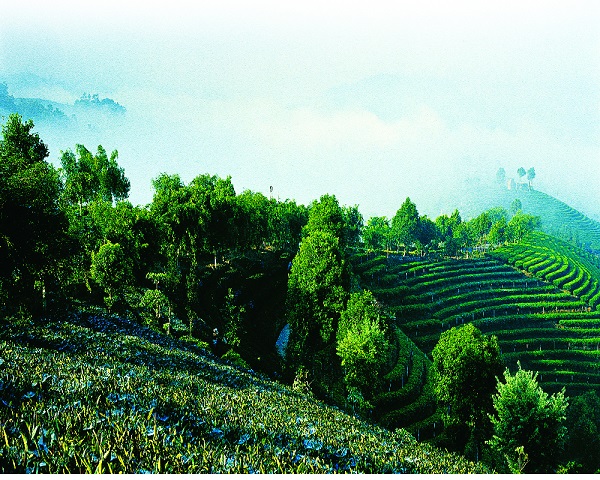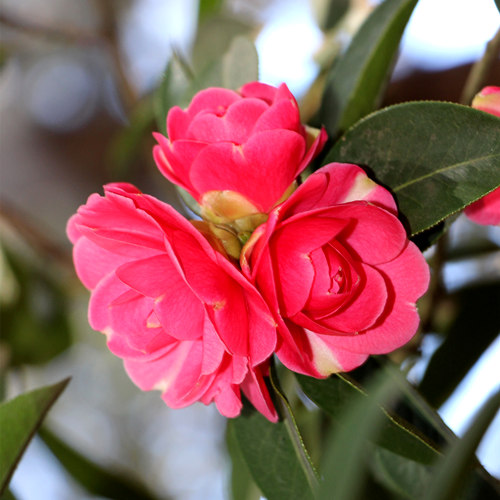
Magnificent Rivers in Yunnan: A Detailed Introduction
Magnificent Rivers in Yunnan: A Detailed Introduction
Overview
Yunnan Province, located in southwestern China, is blessed with numerous magnificent rivers that traverse its diverse landscapes, ranging from snow-capped mountains and deep valleys to lush forests and fertile plains. These rivers are vital for the province's ecology, economy, and culture, providing water for agriculture, hydroelectric power, transportation, and supporting rich biodiversity. Here is a detailed introduction to some of the most significant rivers in Yunnan:
Yangtze River (Jinsha River)
Location: Originates from the Tibetan Plateau, flowing through northern Yunnan.
Length in Yunnan: Approximately 1,500 kilometers (932 miles).
Features:
Tiger Leaping Gorge: One of the deepest gorges in the world, located between Lijiang and Shangri-La. The gorge offers spectacular views and challenging trekking routes.
Cultural Significance: The river has been an essential waterway for centuries, supporting agriculture and human settlements along its banks.
Hydroelectric Power: Several major dams, including the Xiangjiaba and Xiluodu dams, harness the river's power for electricity generation.
Scenic Beauty: The river winds through stunning landscapes, including the Three Parallel Rivers area, a UNESCO World Heritage Site.
Mekong River (Lancang River)
Location: Originates in Tibet, flows through Yunnan before continuing into Southeast Asia.
Length in Yunnan: Approximately 750 kilometers (466 miles).
Features:
Scenic Valleys: The river cuts through deep gorges and lush valleys, providing picturesque scenery and rich biodiversity.
Cultural and Economic Significance: The river is crucial for agriculture, fishing, and transportation for the ethnic communities living along its banks.
Hydropower Projects: The Jinghong and Nuozhadu dams are significant hydroelectric projects on the Mekong in Yunnan.
Tourism: Popular for river cruises, especially around Jinghong and Xishuangbanna, offering insights into the region's diverse cultures and ecosystems.
Salween River (Nu River)
Location: Flows from the Tibetan Plateau through western Yunnan, into Myanmar and Thailand.
Length in Yunnan: Approximately 500 kilometers (311 miles).
Features:
Pristine Environment: Known for its unspoiled natural beauty, the river flows through the remote and rugged terrain of the Nujiang Lisu Autonomous Prefecture.
Biodiversity: The river basin is a biodiversity hotspot, home to many rare and endangered species of plants and animals.
Cultural Diversity: The Nu River region is home to various ethnic minorities, including the Lisu, Nu, and Tibetan people, who maintain traditional lifestyles.
Ecological Conservation: Efforts are ongoing to preserve the river's ecological integrity, with parts of the region designated as national parks and nature reserves.
Red River (Yuan River)
Location: Originates in Yunnan, flows southeast into Vietnam.
Length in Yunnan: Approximately 700 kilometers (435 miles).
Features:
Terraced Fields: The river is famous for the spectacular terraced rice fields of the Hani people, particularly in the Honghe Hani Rice Terraces, a UNESCO World Heritage Site.
Agricultural Importance: The river supports extensive agricultural activities, providing irrigation for crops like rice, sugarcane, and bananas.
Cultural Significance: The river basin is home to several ethnic groups, including the Hani, Dai, and Yi, who have developed unique agricultural and cultural practices.
Scenic Beauty: The river flows through diverse landscapes, from highlands to subtropical valleys, offering beautiful vistas and rich cultural heritage.
Pearl River (Nanpan River)
Location: Originates in Yunnan and flows through Guangxi before reaching Guangdong.
Length in Yunnan: Approximately 700 kilometers (435 miles).
Features:
Hydrological Significance: The river's headwaters contribute significantly to the Pearl River system, which is one of the major river systems in southern China.
Economic Importance: The river basin is crucial for agriculture, providing water for the irrigation of rice paddies, tea plantations, and other crops.
Cultural Heritage: The river flows through areas with rich cultural traditions, including those of the Zhuang, Yao, and Miao ethnic groups.
Scenic Attractions: The river and its tributaries meander through karst landscapes, creating picturesque scenery and opportunities for ecotourism.
Conclusion
The magnificent rivers of Yunnan are more than just waterways; they are lifelines that sustain the province's rich biodiversity, cultural diversity, and economic activities. From the mighty Yangtze with its dramatic gorges to the serene Red River with its stunning terraced fields, each river offers unique landscapes and experiences. These rivers not only



